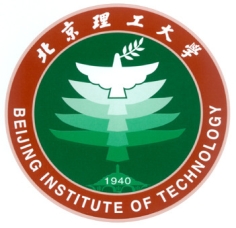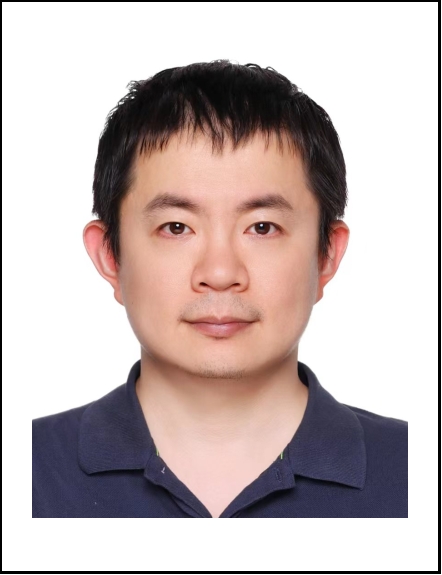No.457 Research on Micro-area Angle-resolved Photoemission Spectroscopy (ARPES) Technology and Moiré Bands of Twisted Graphene
来源: 作者:Liu Zhongkai, Researcher (ShanghaiTech University) 发布时间:2024-07-22contact person: Jiadong Zhou, jdzhou@bit.edu.cn
reporter: Liu Zhongkai, Researcher (ShanghaiTech University)
time: 2024-07-22
place: Physics Experiment Center, Conference Room 229
profile:


 9001cc.s金沙登录“博约学术论坛”系列报告
9001cc.s金沙登录“博约学术论坛”系列报告
第457期
题目:微区角分辨光电子能谱技术及转角石墨烯Moiré能带研究 |
报告人:柳仲楷,研究员(上海科技大学) 时 间:2024年7月22日(周一)下午14:00 地 点:物理实验中心229会议室 |
摘要: 基于同步辐射的微区角分辨光电子能谱技术(微区ARPES)是近几年角分辨光电子能谱技术发展的一个新的方向。通过将同步辐射光进行微聚焦至亚微米/百纳米甚至更小,实现具有高空间分辨率的电子结构角分辨光电子能谱测量。此技术对于小尺寸样品,微纳加工的电子学器件有着重要的意义。我们通过上海同步辐射光源光源二期线站工程,于2021年6月建设完成国内首个微区ARPES实验站(BL07U-NanoARPES)并已开放用户使用[1]。 在本次报告中,我们将介绍上海同步辐射光源(SSRF)的BL07U-NanoARPES线站的建设、指标、能力和运行情况。作为示例,我们展示了在魔角扭转三层石墨烯[2]上的研究工作,清晰地解析了莫尔平带与狄拉克带的共存;我们介绍通过背栅调控对齐的双层石墨烯/hBN异质结构中莫尔电子结构的演化[3],对魔角扭转双层石墨烯平带背栅调控结果[4],以及对2M-WS2拓扑超导材料体系进行系统能带、拓扑物性及超导机理研究的结果[5,6,7]。 [1]刘嘉宇,沈大伟,柳仲楷,孙喆,黄耀波,乔山,中国基于同步辐射光源的ARPES线站简介, 中国科学: 物理学 力学 天文学,(06): 6-23 (2023) [2] Y. W. Li et al., Advanced Materials, 202205996 (2022) [3] H. B. Xiao et al., arXiv:2405.11893 (2024) [4] Q. Li et al., in preparation [5] Y. W. Li et al., Nature Communications 12: 2874 (2021) [6] L. X. Xu et al., Advanced Materials, 202300227 (2023) [7] Y. W. Li et al. Nature Communications in press(2024) |
简历:
|
联系方式:jdzhou@bit.edu.cn 邀请人: 周家东 网 址:http://physics.bit.edu.cn/ 承办单位:物理学院、先进光电量子结构设计与测量教育部重点实验室 |
*Title:Research on Micro-area Angle-resolved Photoemission Spectroscopy (ARPES) Technology and Moiré Bands of Twisted Graphene |
*Reporter:Liu Zhongkai, Researcher (ShanghaiTech University) *Time:14:00, July 22, 2024 (Monday) *Place:Physics Experiment Center, Conference Room 229 *Contact Person: Jiadong Zhou, jdzhou@bit.edu.cn |
*Abstract: Micro-area angle-resolved photoemission spectroscopy (Micro-ARPES) based on synchrotron radiation has been a new direction in the development of angle-resolved photoemission spectroscopy (ARPES) technology in recent years. By focusing synchrotron radiation light into sub-micron or even smaller areas, this technique achieves high spatial resolution in angle-resolved photoemission spectroscopy measurements of electronic structures. This technology is of great significance for small-sized samples and micro-nano processed electronic devices. In June 2021, we completed the construction of the first domestic micro-area ARPES experimental station (BL07U-NanoARPES) through the Phase II beamline project of the Shanghai Synchrotron Radiation Facility (SSRF) and it has been open for user operation since then [1]. In this report, we will introduce the construction, specifications, capabilities, and operational status of the BL07U-NanoARPES beamline at SSRF. As an example, we will present our research on magic-angle twisted trilayer graphene [2], clearly resolving the coexistence of moiré flat bands and Dirac bands. We will also discuss the evolution of moiré electronic structures in aligned bilayer graphene/hBN heterostructures controlled by a back gate [3], back gate regulation results of the flat bands in magic-angle twisted bilayer graphene [4], and systematic band structure, topological properties, and superconducting mechanism studies on the 2M-WS2 topological superconducting material system [5,6,7]. References: [1] Jia-Yu Liu, Da-Wei Shen, Zhong-Kai Liu, Zhe Sun, Yao-Bo Huang, Shan Qiao, Introduction to the ARPES beamlines based on synchrotron radiation sources in China, Chinese Science Bulletin: Physics, Mechanics, Astronomy, (06): 6-23 (2023) [2] Y. W. Li et al., Advanced Materials, 202205996 (2022) [3] H. B. Xiao et al., arXiv:2405.11893 (2024) [4] Q. Li et al., in preparation [5] Y. W. Li et al., Nature Communications 12: 2874 (2021) [6] L. X. Xu et al., Advanced Materials, 202300227 (2023) [7] Y. W. Li et al., Nature Communications, in press (2024) |
*Profile: Zhongkai Liu, Tenured Associate Professor and Researcher at ShanghaiTech University, leading talent in the "Ten Thousand Talents Program." He received his Bachelor of Science degree in Basic Sciences from Tsinghua University in 2006 and his Ph.D. in Physics from Stanford University in 2014. From 2014 to 2015, he conducted postdoctoral research at the Diamond Light Source in the UK. In July 2015, he joined the School of Physical Science and Technology at ShanghaiTech University. His research focuses on the development and application of angle-resolved photoemission spectroscopy (ARPES) to study the electronic structures of advanced materials. He has made significant contributions to the exploration of topological quantum materials and low-dimensional quantum materials, as well as their electronic structures, including topological Dirac semimetals, Weyl semimetals, magnetic topological insulators, and topological superconducting materials. He has published over 100 papers in journals including Science, Nature, and its sub-journals, PRL, and others. |





